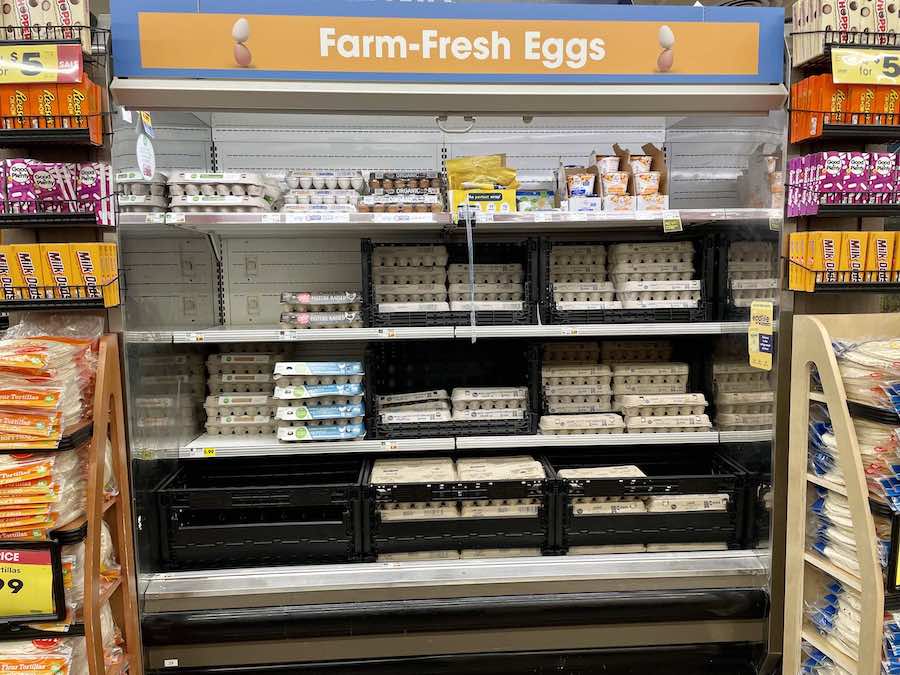Grocery prices (the “food at home index”) fell in March for the first time since 2020, down 0.3% from February.*
According to Barron’s, overall consumer prices were 5% higher in March than a year ago, down from 6% in February and 9.1% last summer. Egg prices were down almost 11% in March from the month earlier. Egg prices have been a particular problem in the last year. A combination of avian flu and increased labor and transportation costs have made egg prices jump at a historic rate. It appears that the trend has peaked.

It’s Not All Good News
An index made up of poultry, meats, fish, and eggs decreased by 1.4%. Fruit and vegetable prices were down 1.3% in March. Despite this good news, other grocery items like non-alcoholic beverages, baked goods, and cereal continued to go up.
Cereal prices were up 13.6% in March over the previous year, cookies were up 16.6%. Manufactured foods like cereals continue to see inflationary pressure due to supply-chain issues and longer production cycles. The biggest chunks of a grocery shopper’s dollar go to
the food-processing industry (24.6 cents), retailers (19.9 cents) and wholesalers (14.7 cents).**
The cost of eating out continues to rise at the same pace as in the two previous months, up another 0.6% in March.
Food prices have exerted some of the greatest pressure on the inflationary engine since energy prices started to stabilize after the shock of Russia’s invasion of Ukraine. Despite that, energy prices remain 8.5% higher than last year.
“The decline in food at home was somewhat surprising, but we have seen transportation costs and commodity prices fall of late, which should support disinflation in the category,” wrote economists at Bank of America in a Wednesday note, “Food away from home, meanwhile, will likely remain sticky until we see more moderation in wages.” *
Restaurants have been able to pass rising costs to consumers recently and have even increased margins along the way. After being locked down for the pandemic, many consumers felt it was necessary to get out of the house to eat. That pricing power has peaked, and profitability will likely suffer going forward. Consumers are more price-conscious and likely to eat at home while buying cheaper items or buying less. Looking for good deals is a real priority now.
Food Companies Overall Have Done Well:
In a report published last week, food industry consulting firm Pentallect assessed the financial performance of 70 major publicly traded food companies and found that 97% had sales increases in 2022. But all the growth was due to price increases rather than organic volume growth and acquisitions. *
Profitability was also trending up across much of the industry despite ongoing supply chain and cost pressures, according to the report. More than 80% of the food companies saw gross profit increases in 2022, and over 70% had operating profit increases. *
Food prices will likely move downward from here. Consumers have not seen a significant effect from decreasing inflation and feel they must protect their wallets. As consumers pull back on spending, revenue, and income will likely fall for food companies.
Bob Goldin, partner at Pentallect, expects to see “growing and significant consumer resistance” to high prices while they favor private label and lower-priced brands. As a result, food companies will be far less reliant on price increases as a growth driver going forward, he adds.
“To maintain or improve somewhat lagging profit margins in a slow volume growth environment, food companies will need to increase focus on operating expense reduction and brand building initiatives,” says Goldin in Pentallect’s report. *


Recent Comments